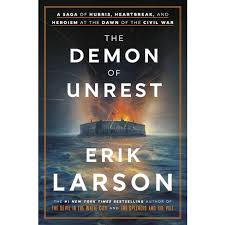The Man in the Felt Hat
byThe Man in the Felt Hat offers a compelling look at Abraham Lincoln’s secretive journey to Washington, D.C., during a time of rising tension. As his inauguration approached, Lincoln was aware of the political unrest and increasing threats against him. To safeguard his arrival, he decided to travel in disguise, wearing a worn overcoat and a “kossuth” hat—a symbol of democratic ideals that had been popularized by Hungarian revolutionary Louis Kossuth. The combination of the hat and his slouched posture allowed him to avoid recognition, despite his tall and recognizable frame. This careful choice of attire reflected Lincoln’s strategic thinking, aimed at ensuring his safety while making the critical journey at a time when the nation was on the brink of civil war.
Lincoln was not alone during this journey. He was accompanied by Ward Lamon, his trusted bodyguard, and Kate Warne, a skilled detective who had worked on Lincoln’s security before. As they traveled through the night by train, the American Telegraph Company took the extraordinary step of cutting off the telegraph lines to ensure that no one would be able to learn of Lincoln’s passage until after he had arrived safely. This strategic action was taken to avoid any early alerts about his whereabouts, which could have put his life in greater jeopardy. Adding to the intrigue, the group unknowingly shared their train car with New York’s police superintendent, John Kennedy, who had been assigned to provide additional security in Baltimore. His presence further emphasized the gravity of the situation and the precautions taken to protect the president-elect.
Upon reaching Baltimore early on the morning of February 23, the group faced the next hurdle—ensuring that no one would notice their arrival. Lincoln’s team worked to discreetly switch trains, hoping to move quietly and avoid attracting attention. However, their plans were almost thwarted when Representative Elihu Washburne recognized Lincoln, despite the disguise, at the train depot. Washburne had been one of the few individuals who had been briefed about Lincoln’s journey, and his recognition threatened to compromise their carefully laid plans. Despite this close call, Lincoln’s group successfully continued on their way, determined to reach Washington without further incident.
In Washington, the Willard Hotel served as the political hub where Lincoln made his entrance into the capital. As he arrived and checked into the hotel, William Seward, soon to be appointed as Secretary of State, followed close behind. Seward, though a prominent figure in his own right, had lost out on the presidency to Lincoln, a blow to his ego. His desire for influence was palpable, and he quickly sought to align himself with Lincoln’s administration, despite his lingering resentment. The relationship between Lincoln and Seward was complex, with Seward’s political ambitions sometimes clashing with the president-elect’s goals. While Seward’s presence was invaluable in many respects, his constant political maneuvering sometimes added unnecessary tension within the cabinet.
This chapter not only highlights the measures taken by Lincoln and his team to ensure his safe arrival in Washington but also hints at the broader political environment he was entering. The nation was on the brink of civil war, with Southern states already beginning to secede from the Union. Lincoln’s arrival marked a critical point in American history, one that would set the stage for the turbulent years ahead. The nation’s divisions were evident, and the pressure on Lincoln to unite a fractured country would soon escalate. His journey to Washington was not just a physical trip but a symbolic one—an indication of the enormous challenges that lay ahead for him as the nation’s leader. His discreet arrival, the secrecy surrounding his movements, and the tensions that marked his early days as president would soon give way to the larger crisis of the Civil War, a conflict that would define his presidency and the future of the United States.
Lincoln’s ability to navigate these early challenges with such care demonstrated his political acumen. The choices he made in keeping his travel secret were not just about protecting his safety but also about sending a message to the nation. As the country teetered on the edge of conflict, Lincoln’s quiet entry into Washington symbolized the quiet determination with which he would face the growing crisis. Despite the political maneuvering around him and the threats that loomed, Lincoln’s calm resolve and calculated decisions set the tone for the leadership he would provide in the coming years.

